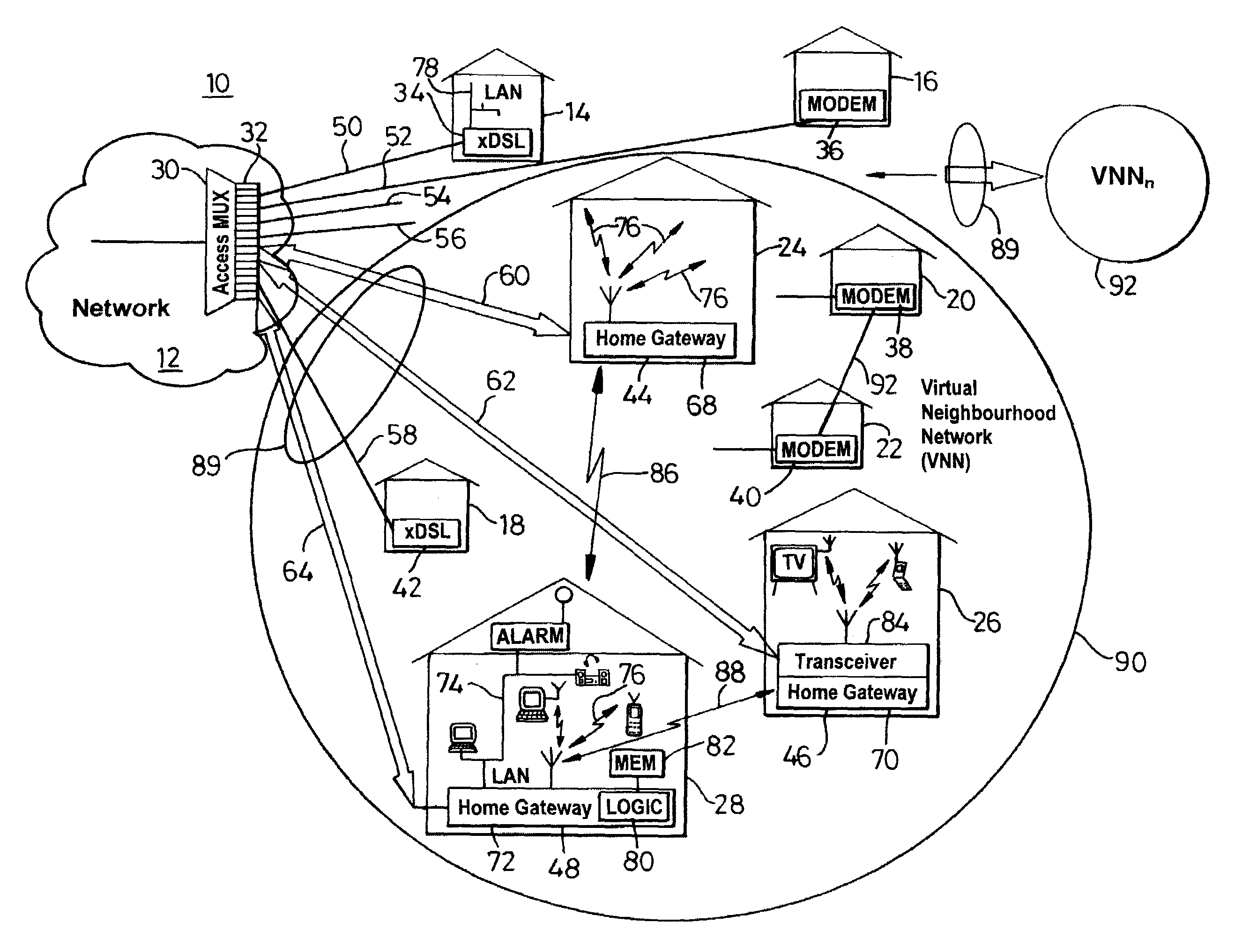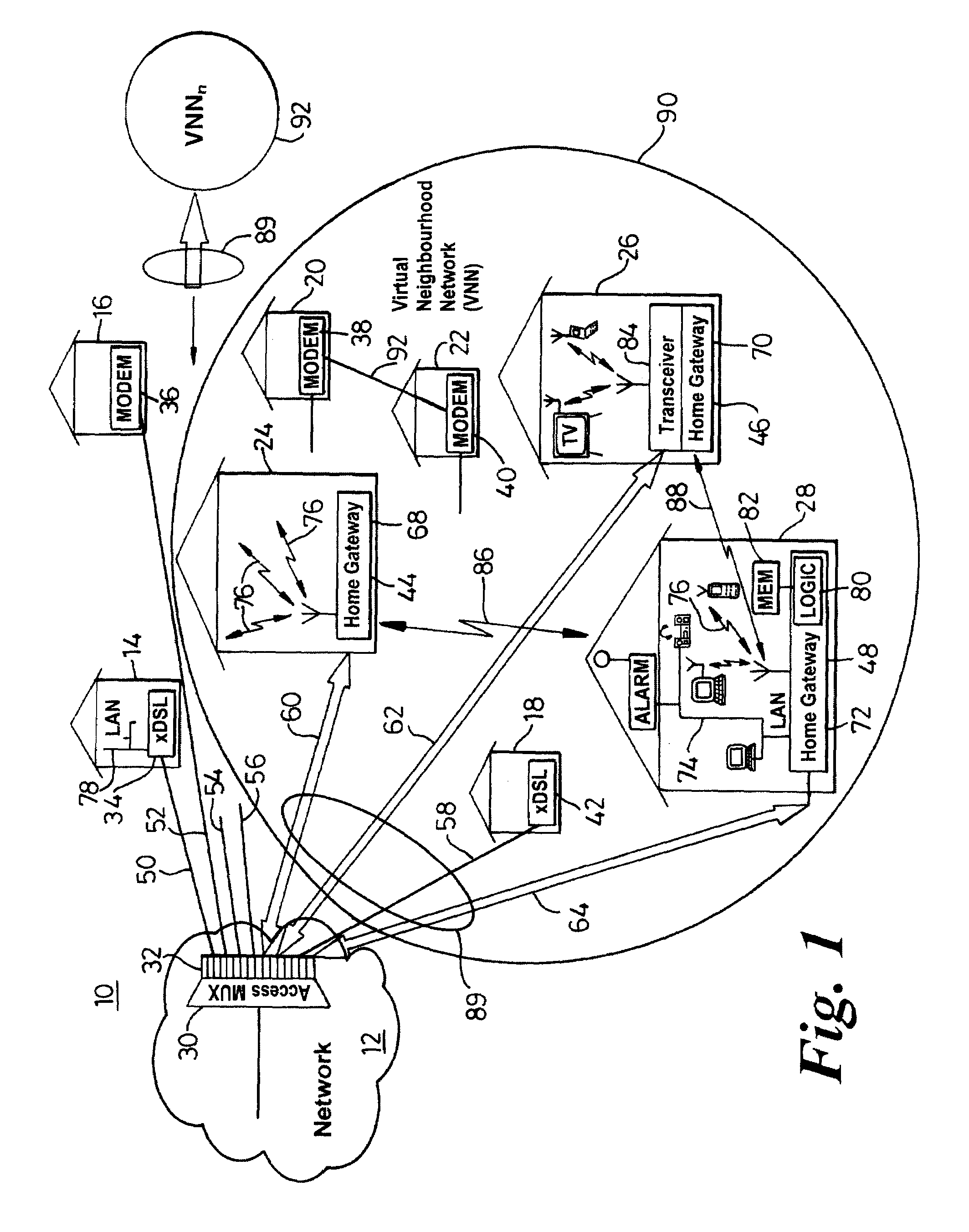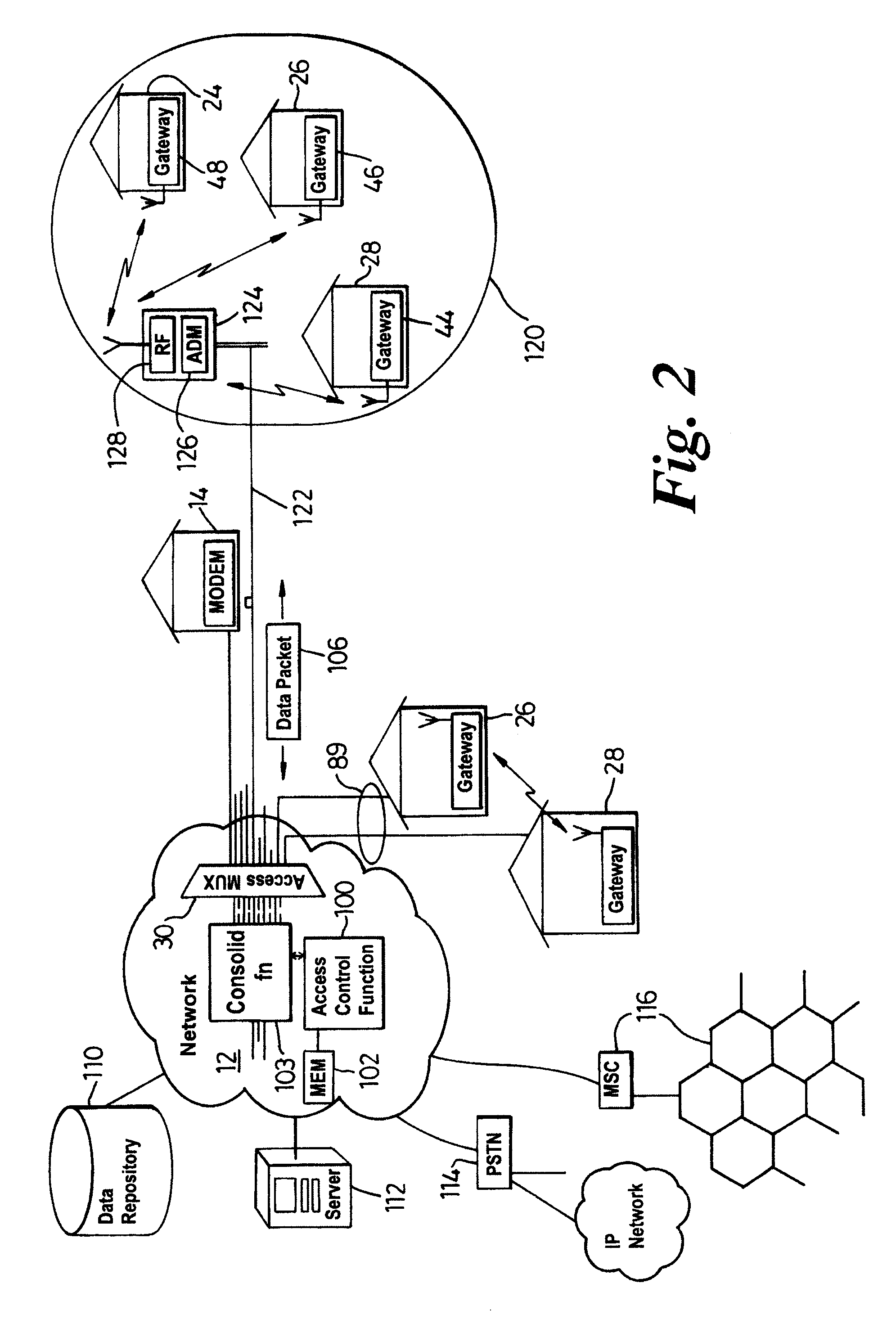Communication system architecture and operating methodology providing a virtual neighborhood network
a technology of communication system and operating methodology, applied in the field of communication system architecture and associated operating methodology that provide a virtual neighbourhood network, can solve the problems of placing ever-increasing strain on the ability of system designers, particular transport media, to provide considerable amounts of infrastructure, etc., to overcome bandwidth limitations, increase peak bandwidth capacity, and increase bandwidth
- Summary
- Abstract
- Description
- Claims
- Application Information
AI Technical Summary
Benefits of technology
Problems solved by technology
Method used
Image
Examples
Embodiment Construction
[0039]Resource-sharing is a well-known concept in communication networks. In the core network, for example, traffic from a number of disparate customers may be consolidated onto a single transmission link, where bandwidth is usually less than the sum of the maximum bandwidth to the connected customers. In a local area network (LAN), an ethernet network may have a large number of connected computers which are able to share this resource. However, these prior art systems, as will now be appreciated, have only considered the use of multiplexed resources within a backbone network and upstream of a Local Access Concentrator located in a remote (infrastructure, e.g. exchange) location where all associated lines terminate at a common location. In contrast, the present invention looks to an access distribution network to the customer premises, which access distribution network is a point-to-point network not apparently lending itself to sharing of any medium.
[0040]Turning to FIG. 1, there i...
PUM
 Login to View More
Login to View More Abstract
Description
Claims
Application Information
 Login to View More
Login to View More - R&D
- Intellectual Property
- Life Sciences
- Materials
- Tech Scout
- Unparalleled Data Quality
- Higher Quality Content
- 60% Fewer Hallucinations
Browse by: Latest US Patents, China's latest patents, Technical Efficacy Thesaurus, Application Domain, Technology Topic, Popular Technical Reports.
© 2025 PatSnap. All rights reserved.Legal|Privacy policy|Modern Slavery Act Transparency Statement|Sitemap|About US| Contact US: help@patsnap.com



